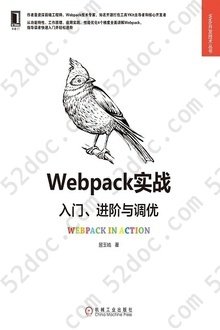注重体验与质量的电子书资源下载网站
分类于: 其它 互联网
简介

Clean Architecture: A Craftsman's Guide to Software Structure and Design 豆 8.8分
资源最后更新于 2020-07-23 14:09:44
作者:[美] Robert C·Martin
出版社:Prentice Hall
出版日期:2017-01
ISBN:9780134494166
文件格式: pdf
标签: 架构 计算机 Architecture 软件工程 软件开发 编程 程序设计 programming
简介· · · · · ·
Practical Software Architecture Solutions from the Legendary Robert C. Martin (“Uncle Bob”)
By applying universal rules of software architecture, you can dramatically improve developer productivity throughout the life of any software system. Now, building upon the success of his best-selling books Clean Code and The Clean Coder, legendary software craftsman Robert C. Martin (“...
目录
Foreword xv
Preface xix
Acknowledgments xxiii
About the Author xxv
Part I: Introduction 1
Chapter 1: What Is Design and Architecture? 3
The Goal? 4
Case Study 5
Conclusion 12
Chapter 2: A Tale of Two Values 13
Behavior 14
Architecture 14
The Greater Value 15
Eisenhower’s Matrix 16
Fight for the Architecture 18
Part II: Starting with the Bricks: Programming Paradigms 19
Chapter 3: Paradigm Overview 21
Structured Programming 22
Object-Oriented Programming 22
Functional Programming 22
Food for Thought 23
Conclusion 24
Chapter 4: Structured Programming 25
Proof 27
A Harmful Proclamation 28
Functional Decomposition 29
No Formal Proofs 30
Science to the Rescue 30
Tests 31
Conclusion 31
Chapter 5: Object-Oriented Programming 33
Encapsulation? 34
Inheritance? 37
Polymorphism? 40
Conclusion 47
Chapter 6: Functional Programming 49
Squares of Integers 50
Immutability and Architecture 52
Segregation of Mutability 52
Event Sourcing 54
Conclusion 56
Part III: Design Principles 57
Chapter 7: SRP: The Single Responsibility Principle 61
Symptom 1: Accidental Duplication 63
Symptom 2: Merges 65
Solutions 66
Conclusion 67
Chapter 8: OCP: The Open-Closed Principle 69
A Thought Experiment 70
Directional Control 74
Information Hiding 74
Conclusion 75
Chapter 9: LSP: The Liskov Substitution Principle 77
Guiding the Use of Inheritance 78
The Square/Rectangle Problem 79
LSP and Architecture 80
Example LSP Violation 80
Conclusion 82
Chapter 10: ISP: The Interface Segregation Principle 83
ISP and Language 85
ISP and Architecture 86
Conclusion 86
Chapter 11: DIP: The Dependency Inversion Principle 87
Stable Abstractions 88
Factories 89
Concrete Components 91
Conclusion 91
Part IV: Component Principles 93
Chapter 12: Components 95
A Brief History of Components 96
Relocatability 99
Linkers 100
Conclusion 102
Chapter 13: Component Cohesion 103
The Reuse/Release Equivalence Principle 104
The Common Closure Principle 105
The Common Reuse Principle 107
The Tension Diagram for Component Cohesion 108
Conclusion 110
Chapter 14: Component Coupling 111
The Acyclic Dependencies Principle 112
Top-Down Design 118
The Stable Dependencies Principle 120
The Stable Abstractions Principle 126
Conclusion 132
Part V: Architecture 133
Chapter 15: What Is Architecture? 135
Development 137
Deployment 138
Operation 138
Maintenance 139
Keeping Options Open 140
Device Independence 142
Junk Mail 144
Physical Addressing 145
Conclusion 146
Chapter 16: Independence 147
Use Cases 148
Operation 149
Development 149
Deployment 150
Leaving Options Open 150
Decoupling Layers 151
Decoupling Use Cases 152
Decoupling Mode 153
Independent Develop-ability 153
Independent Deployability 154
Duplication 154
Decoupling Modes (Again) 155
Conclusion 158
Chapter 17: Boundaries: Drawing Lines 159
A Couple of Sad Stories 160
FitNesse 163
Which Lines Do You Draw, and When Do You Draw Them? 165
What About Input and Output? 169
Plugin Architecture 170
The Plugin Argument 172
Conclusion 173
Chapter 18: Boundary Anatomy 175
Boundary Crossing 176
The Dreaded Monolith 176
Deployment Components 178
Threads 179
Local Processes 179
Services 180
Conclusion 181
Chapter 19: Policy and Level 183
Level 184
Conclusion 187
Chapter 20: Business Rules 189
Entities 190
Use Cases 191
Request and Response Models 193
Conclusion 194
Chapter 21: Screaming Architecture 195
The Theme of an Architecture 196
The Purpose of an Architecture 197
But What About the Web? 197
Frameworks Are Tools, Not Ways of Life 198
Testable Architectures 198
Conclusion 199
Chapter 22: The Clean Architecture 201
The Dependency Rule 203
A Typical Scenario 207
Conclusion 209
Chapter 23: Presenters and Humble Objects 211
The Humble Object Pattern 212
Presenters and Views 212
Testing and Architecture 213
Database Gateways 214
Data Mappers 214
Service Listeners 215
Conclusion 215
Chapter 24: Partial Boundaries 217
Skip the Last Step 218
One-Dimensional Boundaries 219
Facades 220
Conclusion 220
Chapter 25: Layers and Boundaries 221
Hunt the Wumpus 222
Clean Architecture? 223
Crossing the Streams 226
Splitting the Streams 227
Conclusion 228
Chapter 26: The Main Component 231
The Ultimate Detail 232
Conclusion 237
Chapter 27: Services: Great and Small 239
Service Architecture? 240
Service Benefits? 240
The Kitty Problem 242
Objects to the Rescue 244
Component-Based Services 245
Cross-Cutting Concerns 246
Conclusion 247
Chapter 28: The Test Boundary 249
Tests as System Components 250
Design for Testability 251
The Testing API 252
Conclusion 253
Chapter 29: Clean Embedded Architecture 255
App-titude Test 258
The Target-Hardware Bottleneck 261
Conclusion 273
Part VI: Details 275
Chapter 30: The Database Is a Detail 277
Relational Databases 278
Why Are Database Systems So Prevalent? 279
What If There Were No Disk? 280
Details 281
But What about Performance? 281
Anecdote 281
Conclusion 283
Chapter 31: The Web Is a Detail 285
The Endless Pendulum 286
The Upshot 288
Conclusion 289
Chapter 32: Frameworks Are Details 291
Framework Authors 292
Asymmetric Marriage 292
The Risks 293
The Solution 294
I Now Pronounce You … 295
Conclusion 295
Chapter 33: Case Study: Video Sales 297
The Product 298
Use Case Analysis 298
Component Architecture 300
Dependency Management 302
Conclusion 302
Chapter 34: The Missing Chapter 303
Package by Layer 304
Package by Feature 306
Ports and Adapters 308
Package by Component 310
The Devil Is in the Implementation Details 315
Organization versus Encapsulation 316
Other Decoupling Modes 319
Conclusion: The Missing Advice 321
Part VII: Appendix 323
Appendix A Architecture Archaeology 325
Index 375
Preface xix
Acknowledgments xxiii
About the Author xxv
Part I: Introduction 1
Chapter 1: What Is Design and Architecture? 3
The Goal? 4
Case Study 5
Conclusion 12
Chapter 2: A Tale of Two Values 13
Behavior 14
Architecture 14
The Greater Value 15
Eisenhower’s Matrix 16
Fight for the Architecture 18
Part II: Starting with the Bricks: Programming Paradigms 19
Chapter 3: Paradigm Overview 21
Structured Programming 22
Object-Oriented Programming 22
Functional Programming 22
Food for Thought 23
Conclusion 24
Chapter 4: Structured Programming 25
Proof 27
A Harmful Proclamation 28
Functional Decomposition 29
No Formal Proofs 30
Science to the Rescue 30
Tests 31
Conclusion 31
Chapter 5: Object-Oriented Programming 33
Encapsulation? 34
Inheritance? 37
Polymorphism? 40
Conclusion 47
Chapter 6: Functional Programming 49
Squares of Integers 50
Immutability and Architecture 52
Segregation of Mutability 52
Event Sourcing 54
Conclusion 56
Part III: Design Principles 57
Chapter 7: SRP: The Single Responsibility Principle 61
Symptom 1: Accidental Duplication 63
Symptom 2: Merges 65
Solutions 66
Conclusion 67
Chapter 8: OCP: The Open-Closed Principle 69
A Thought Experiment 70
Directional Control 74
Information Hiding 74
Conclusion 75
Chapter 9: LSP: The Liskov Substitution Principle 77
Guiding the Use of Inheritance 78
The Square/Rectangle Problem 79
LSP and Architecture 80
Example LSP Violation 80
Conclusion 82
Chapter 10: ISP: The Interface Segregation Principle 83
ISP and Language 85
ISP and Architecture 86
Conclusion 86
Chapter 11: DIP: The Dependency Inversion Principle 87
Stable Abstractions 88
Factories 89
Concrete Components 91
Conclusion 91
Part IV: Component Principles 93
Chapter 12: Components 95
A Brief History of Components 96
Relocatability 99
Linkers 100
Conclusion 102
Chapter 13: Component Cohesion 103
The Reuse/Release Equivalence Principle 104
The Common Closure Principle 105
The Common Reuse Principle 107
The Tension Diagram for Component Cohesion 108
Conclusion 110
Chapter 14: Component Coupling 111
The Acyclic Dependencies Principle 112
Top-Down Design 118
The Stable Dependencies Principle 120
The Stable Abstractions Principle 126
Conclusion 132
Part V: Architecture 133
Chapter 15: What Is Architecture? 135
Development 137
Deployment 138
Operation 138
Maintenance 139
Keeping Options Open 140
Device Independence 142
Junk Mail 144
Physical Addressing 145
Conclusion 146
Chapter 16: Independence 147
Use Cases 148
Operation 149
Development 149
Deployment 150
Leaving Options Open 150
Decoupling Layers 151
Decoupling Use Cases 152
Decoupling Mode 153
Independent Develop-ability 153
Independent Deployability 154
Duplication 154
Decoupling Modes (Again) 155
Conclusion 158
Chapter 17: Boundaries: Drawing Lines 159
A Couple of Sad Stories 160
FitNesse 163
Which Lines Do You Draw, and When Do You Draw Them? 165
What About Input and Output? 169
Plugin Architecture 170
The Plugin Argument 172
Conclusion 173
Chapter 18: Boundary Anatomy 175
Boundary Crossing 176
The Dreaded Monolith 176
Deployment Components 178
Threads 179
Local Processes 179
Services 180
Conclusion 181
Chapter 19: Policy and Level 183
Level 184
Conclusion 187
Chapter 20: Business Rules 189
Entities 190
Use Cases 191
Request and Response Models 193
Conclusion 194
Chapter 21: Screaming Architecture 195
The Theme of an Architecture 196
The Purpose of an Architecture 197
But What About the Web? 197
Frameworks Are Tools, Not Ways of Life 198
Testable Architectures 198
Conclusion 199
Chapter 22: The Clean Architecture 201
The Dependency Rule 203
A Typical Scenario 207
Conclusion 209
Chapter 23: Presenters and Humble Objects 211
The Humble Object Pattern 212
Presenters and Views 212
Testing and Architecture 213
Database Gateways 214
Data Mappers 214
Service Listeners 215
Conclusion 215
Chapter 24: Partial Boundaries 217
Skip the Last Step 218
One-Dimensional Boundaries 219
Facades 220
Conclusion 220
Chapter 25: Layers and Boundaries 221
Hunt the Wumpus 222
Clean Architecture? 223
Crossing the Streams 226
Splitting the Streams 227
Conclusion 228
Chapter 26: The Main Component 231
The Ultimate Detail 232
Conclusion 237
Chapter 27: Services: Great and Small 239
Service Architecture? 240
Service Benefits? 240
The Kitty Problem 242
Objects to the Rescue 244
Component-Based Services 245
Cross-Cutting Concerns 246
Conclusion 247
Chapter 28: The Test Boundary 249
Tests as System Components 250
Design for Testability 251
The Testing API 252
Conclusion 253
Chapter 29: Clean Embedded Architecture 255
App-titude Test 258
The Target-Hardware Bottleneck 261
Conclusion 273
Part VI: Details 275
Chapter 30: The Database Is a Detail 277
Relational Databases 278
Why Are Database Systems So Prevalent? 279
What If There Were No Disk? 280
Details 281
But What about Performance? 281
Anecdote 281
Conclusion 283
Chapter 31: The Web Is a Detail 285
The Endless Pendulum 286
The Upshot 288
Conclusion 289
Chapter 32: Frameworks Are Details 291
Framework Authors 292
Asymmetric Marriage 292
The Risks 293
The Solution 294
I Now Pronounce You … 295
Conclusion 295
Chapter 33: Case Study: Video Sales 297
The Product 298
Use Case Analysis 298
Component Architecture 300
Dependency Management 302
Conclusion 302
Chapter 34: The Missing Chapter 303
Package by Layer 304
Package by Feature 306
Ports and Adapters 308
Package by Component 310
The Devil Is in the Implementation Details 315
Organization versus Encapsulation 316
Other Decoupling Modes 319
Conclusion: The Missing Advice 321
Part VII: Appendix 323
Appendix A Architecture Archaeology 325
Index 375








